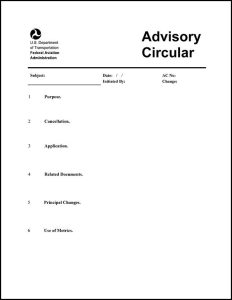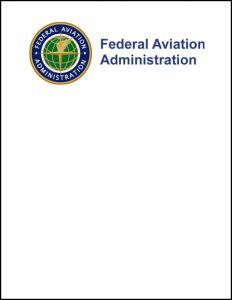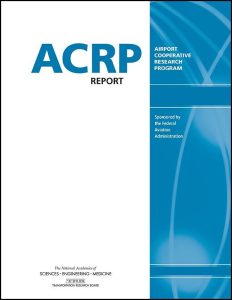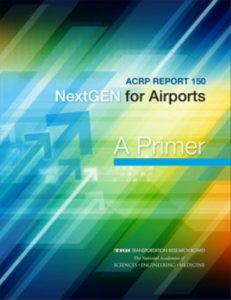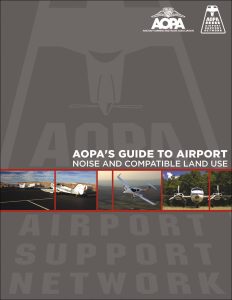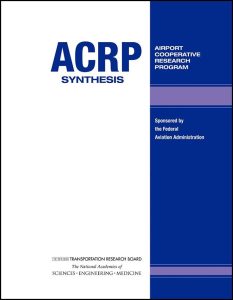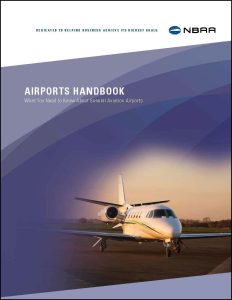To narrow the library of airside resources, use the filter boxes or airport map below or search box above.
Click an item below to expand.
Resources Matching Your Search
2021
This resource is a webpage that provides information on the Electronic Code of Federal Regulations (e-CFR) Title 14, Chapter I, Subchapter I, Part 150, which contains guidance on Part 150: Airport Noise Compatibility Planning including general provisions, development of noise exposure maps and noise compatibility programs, and evaluation and determinations of effects of noise compatibility programs.
1983
This advisory circular (AC) provides guidance for noise control and compatibility planning for airports under Federal Aviation Regulation (FAR) Part 150 and the Aviation Safety and Noise Abatement Act of 1979 (ASNA) (P.L. 96-193). It is intended for use by airport operators, state and local planners and other officials, and interested citizens who may engage in noise control planning.
2020
This desk reference provides explanatory guidance for environmental impact analysis performed to comply with Council on Environmental Quality (CEQ) Regulations for Implementing the Procedural Provisions of the National Environmental Policy Act (CEQ Regulations) (40 Code of Federal Regulations (CFR) parts 1500-1508); U.S. Department of Transportation (DOT) Order 5610.1C, Procedures for Considering Environmental Impacts; and Federal Aviation Administration (FAA) Order 1050.1F Environmental Impacts: Policies and Procedures.
2013
ACRP Report 86 explores a protocol for evaluating and optimizing aircraft departure procedures in terms of noise exposure, emissions, and fuel burn. An accompanying CD-ROM contains a spreadsheet-based Departure Optimization Investigation Tool (DOIT) that allows users to understand and test tradeoffs among various impact measures, including noise levels, rate of fuel consumption, and emissions.
2019
This advisory circular (AC) provides information on community/public involvement in airport planning. This AC is intended to advise airport sponsors, planners, and the public on the benefits of early public participation in airport planning, and the methods by which this participation may be achieved.
2016
ACRP Report 150 is a multivolume series designed to provide airports, airport consultants, and other stakeholders with the information they need to understand and efficiently implement NextGen in a way that achieves an optimal balance of stakeholder needs. The primer is a high-level overview of NextGen designed for airport directors and their senior executive staff. It provides an introduction to the ACRP Report 150: NextGen for Airports series that contain detailed technical information and planning guidelines for understanding, preparing for, and implementing NextGen technologies at airports.
2006
This booklet is intended as a guide in the understanding of the issues, rules, procedures, and policies applicable to airport noise and compatible land use planning.
2004
This advisory circular (AC) can be used as additional information to consider when applying Federal Aviation Regulations (FAR) parts 150 and 161 at U.S. international airports. The balanced approach applies to any airport served by international air traffic that has a perceived noise problem.
2017
Volume I of Annex 16 contains the standards and recommended practices for aircraft noise certification. It also covers international specifications relating to aircraft noise measurement and evaluation methods. This document is available at the ICAO store for $194.
2018
DOC 9184, Part II, provides guidance on land use planning in the vicinity of airports. The manual addresses the ecological considerations of choosing a site, environmental control measures, land use planning, and land use administration. This resource is available from the ICAO store for $175.
2016
ACRP Synthesis 76 examines the results of a literature review and survey of ten airports to summarize the impact of outreach, helicopter noise management programs, technology, and abatement procedures in managing helicopter noise. The report is geared to help both airports and communities address helicopter noise and provides a description of the current state of effective practices for noise management.
2017
ACRP Web-Only Document 32 develops a method to model the effects of single- and mixed-impedance surfaces on the propagation of aircraft noise, in a manner suitable for model implementation to improve the noise prediction accuracy of FAA's Aviation Environmental Design Tool (AEDT). AEDT is an integrated noise model, which currently includes a lateral attenuation adjustment to account for the effects of lateral aircraft directivity and for acoustic propagation over soft ground. This research includes an investigation of additional methods to supplement the lateral attenuation adjustment to allow for modeling noise propagation over hard and mixed ground types in AEDT.
2018
ACRP Web-Only Document 36, Volume 1, supplements the Aviation Environmental Design Tool (AEDT), which computes noise, emissions, and fuel burn as a result of aircraft operations. The web-only document provides users of AEDT with information about varying approaches to profile modeling.
2018
ACRP Web-Only Document 36, Volume 2, documents the approaches used to develop the Aviation Environmental Design Tool (AEDT) outlined in ACRP Web Only Document 36, Volume 1. AEDT computes noise, emissions, and fuel burn as a result of aircraft operations.
2020
ACRP Web-Only Document 47 develops a well-documented, high-fidelity database of acoustic measurements acquired using a consistent data collection and analysis protocol. As the frequency of commercial space operations and number of licensed launch sites in the United States continue to grow rapidly, accurately assessing the impacts of propulsion noise and sonic booms on surrounding communities will become even more critical. Ultimately, the acoustic database developed during this effort will enable future researchers to validate and enhance the models used to predict community noise exposure from space transportation activities.
2018
TRB conducted a webinar that features research from ACRP Synthesis 76 and ACRP Research Report 181. Helicopters produce a unique sound that is easily recognizable. While modern light- and medium-weight civilian helicopters are much quieter than older helicopters or heavy military helicopters, they are still the focus of community concern. This webinar provided a discussion of current practices of managing noise and a summary of the results of recent research on human annoyance response to helicopter noise.
2019
ACRP Web-Only Document 43 seeks to develop and evaluate noise propagation methods that account for aircraft noise reflection and diffraction from terrain and manmade structures. It also recommends methods for inclusion into the Aviation Environmental Design Tool (AEDT) integrated noise modeling framework and provides updated AEDT user information on the influence terrain and man-made structures have on aircraft noise and the applications these new methods have for airport noise analyses.
2020
ACRP Web-Only Document 48 examines the potential role of spatiotemporal population data in aviation noise studies. Aviation noise analysis has traditionally focused on modeling the noise from an average day of operations. There is potential to move from this static approach of identifying high-aircraft-noise areas to a dynamic method of assessing aircraft noise experienced by people where they are as they move about the day and night. Knowing where people are at different times of the day potentially enables the design of airspace routes that minimize the environmental impacts to a shifting population on the ground.
2014
This document provides states, airport operators, air navigation service providers, and other stakeholders with environmental assessment guidance to support sound and informed decision-making when analyzing proposed air traffic management operational changes.
2013
This handbook describes the importance of airports and their economic and social contributions to their surrounding communities and to the nation. It is an ideal resource for elected officials, civic organizations, media, and others who would benefit from the up-to-date information on such topics as economic impact, noise, safety, and environmental considerations.

